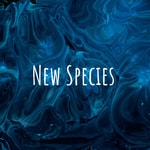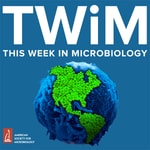New Species – Details, episodes & analysis
Podcast details
Technical and general information from the podcast's RSS feed.

New Species
New Species Podcast
Frequency: 1 episode/17d. Total Eps: 99

Recent rankings
Latest chart positions across Apple Podcasts and Spotify rankings.
Apple Podcasts
🇩🇪 Germany - naturalSciences
26/07/2025#99🇩🇪 Germany - naturalSciences
25/07/2025#94🇩🇪 Germany - naturalSciences
24/07/2025#81🇩🇪 Germany - naturalSciences
23/07/2025#68🇩🇪 Germany - naturalSciences
22/07/2025#47🇫🇷 France - naturalSciences
01/06/2025#100🇩🇪 Germany - naturalSciences
09/02/2025#93🇩🇪 Germany - naturalSciences
08/02/2025#79🇩🇪 Germany - naturalSciences
07/02/2025#62🇩🇪 Germany - naturalSciences
06/02/2025#57
Spotify
No recent rankings available
Shared links between episodes and podcasts
Links found in episode descriptions and other podcasts that share them.
See all- https://fanlink.to/HaTom
149 shares
- https://www.zooniverse.org/
35 shares
- https://www.batcon.org/
14 shares
RSS feed quality and score
Technical evaluation of the podcast's RSS feed quality and structure.
See allScore global : 43%
Publication history
Monthly episode publishing history over the past years.
Two New Pseudoscorpions with Danniella Sherwood
mercredi 28 août 2024 • Duration 48:20
In this episode, Danniella Sherwood brings us two new pseudoscorpions from Ascension Island, one of the most remote islands in the world. Ascension’s ecological history is full of many twists and turns, and it is home to amazing biodiversity that is in desperate need of conservation. Danni and her team worked together to address this need, producing a paper titled ‘David and Goliath’ with one very small and one very large new species. They also provide new faunistic records, or records that show that Ascension and the nearby Boatswain Bird Island are home to stunning endemic pseudoscorpion diversity.
One of my favorite things about Danni’s story is the emphasis she places on teamwork. “It takes a village to produce good research,” She says. “it takes a village to work towards visions of conserving invertebrates in their habitats. You need to have people from all fields, all specialties, all viewpoints in order to make something that’s really impactful, really lasting and enduring to the fields of conservation and ecology and taxonomy.” Listen to this episode for a meaningful story of teamwork and community, and to learn the importance of taxonomy’s role in conserving island flora and fauna.
Danniella Sherwood’s paper “David and Goliath: on the pseudoscorpions of Ascension Island, including the world’s largest, Garypus titanius Beier, 1961, and a new, minute, Neocheiridium Beier, 1932 (Arachnida: Pseudoscorpiones)” is in issue 42 of Natura Somogyienis.
It can be found here: https://doi.org/10.24394/NatSom.2024.42.131
A transcript of this episode can be found here: Danni Sherwood 2 - Transcript
Listen to Danni’s other New Species episode about St. Helenian wolf spiders: https://open.spotify.com/episode/0o8dL8yEpRiFtMO1gVNjkc?si=c068e5d3b6fb40f7
New Species: Garypus ellickae and Neocheiridium ashmoleorum
Episode image credit: Adam Sharp
Follow the Ascension Island Government Conservation Directorate here:
https://www.facebook.com/AscensionIslandConservation
https://twitter.com/aigconservation
Follow Danni’s research on all manner of arachnids here:
https://www.researchgate.net/profile/Danniella-Sherwood
Follow the Species Recovery Trust:
https://www.facebook.com/TheSpeciesRecoveryTrust/
https://www.twitter.com/speciesrecovery
Be sure to follow New Species on Twitter (@PodcastSpecies) and Instagram (@NewSpeciesPodcast) and like the podcast page on Facebook (www.facebook.com/NewSpeciesPodcast)
Music in this podcast is "No More (Instrumental)," by HaTom (https://fanlink.to/HaTom)
If you have questions or feedback about this podcast, please e-mail us at NewSpeciesPodcast@gmail.com
If you would like to support this podcast, please consider doing so at https://www.patreon.com/NewSpeciesPod
A New Polychaete Worm with Chloé, Marcos, and Juan
mercredi 31 juillet 2024 • Duration 40:26
This paper started because Chloé Löis Fourreau and Marcos Teixeira were both too sick to dive during a NEON (National Ecological Observatory Network) bioblitz expedition in the Red Sea. Hoping to at least collect something, they swam to the shoreline and began snorkeling in the shallow water. When they began turning over rocks, what felt like a wasted day turned into an amazing intertidal discovery. In this episode, Chloé and Marcos are joined by their colleague Juan Sempere-Valverde to tell the exciting story of their new segmented polychaete worm, and to encourage everyone to pay attention to annelids and the great value they bring to science.
Just a quick disclaimer for this episode, for some reason my primary recording didn’t save so i’m using the backup. As a result the quality is not great, and for that I really apologize! A reminder that every episode has a transcript (below) so please use that to aid in any hard-to-hear parts.
Chloé Löis Fourreau, Marcos A.L. Teixeira, and Juan Sempere-Valverde’s paper “Two new records and description of a new Perinereis (Annelida, Nereididae) species for the Saudi Arabian Red Sea region” is in volume 1196 of Zookeys.
It can be found here: https://doi.org/10.3897/zookeys.1196.115260
A transcript of this episode can be found here: Chloé Löis Fourreau, Marcos Teixeira, and Juan Sempere-Valverde - Transcript
New Species: Perinereis kaustiana
Episode image credit: Juan Sempere-Valverde
New Species: Perinereis kaustiana
Episode image credit: Juan Sempere-Valverde
Follow Chloé on Twitter: ChaoticChloeia
Follow Juan on Instagram: @bem_lab and @zoologiaus
Read Marcos’ recent paper: https://doi.org/10.1080/14772000.2022.2116124
Be sure to follow New Species on Twitter (@PodcastSpecies) and Instagram (@NewSpeciesPodcast) and like the podcast page on Facebook (www.facebook.com/NewSpeciesPodcast)
Music in this podcast is "No More (Instrumental)," by HaTom (https://fanlink.to/HaTom)
If you have questions or feedback about this podcast, please e-mail us at NewSpeciesPodcast@gmail.com
If you would like to support this podcast, please consider doing so at https://www.patreon.com/NewSpeciesPod
A New Snakeworm Gnat with Thalles Pereira
mardi 5 mars 2024 • Duration 33:17
There are no snakes in Alaska, so what’s that snakelike shape crossing the road? Few people would guess it’s actually thousands of fly larvae moving in a very peculiar pattern that gives the snakeworm gnat their common name. Dr. Thalles Pereira and his coauthors spent lots of time rearing, observing, and sharing their findings with their community in the process of describing this new species, and use citizen science data of this behavior in addition to morphological and molecular analyses in this paper. Listen in as Thalles brings us through the labs and back roads of Alaska to learn why gnats are so special!
Thalles Pereira’s paper “Discovery of snakeworm gnats in Alaska: a new species of Sciara meigen (Diptera: Sciaridae) based on morphological, molecular, and citizen science data” is in volume 6 issue 2 of Integrative Systematics.
It can be found here: https://doi.org/10.18476/2023.673937
A transcript of this episode can be found here: Thalles Pereira - Transcript
New Species: Sciara serpens
Episode image courtesy of Thalles Pereira via Integrative Systematics Stuttgart Contributions to Natural History
Check out Thalles’ Researchgate profile: https://www.researchgate.net/profile/Thalles-Pereira-2
Video of the snakeworm larval behavior: https://doi.org/10.7299/X7WM1DQ9
View these specimens and their observational records on Arctos: https://arctos.database.museum/search.cfm?guid_prefix=UAM%3AEnto%2CUAMObs%3AEnto&scientific_name=Sciara%20serpens&scientific_name_match_type=match&family=Sciaridae
Springtail antifreeze protein paper: https://doi.org/10.1038/s41598-020-60060-z
Be sure to follow New Species on Twitter (@PodcastSpecies) and Instagram (@NewSpeciesPodcast) and like the podcast page on Facebook (www.facebook.com/NewSpeciesPodcast)
Music in this podcast is "No More (Instrumental)," by HaTom (https://fanlink.to/HaTom)
If you have questions or feedback about this podcast, please e-mail us at NewSpeciesPodcast@gmail.com
If you would like to support this podcast, please consider doing so at https://www.patreon.com/NewSpeciesPod
Community Survey and Updates
vendredi 23 février 2024 • Duration 03:34
This is a short episode to share some thoughts and feedback from this year's New Species community survey, as well as some updates on what is to come for the podcast.
Take the community survey here before March 1st: https://forms.gle/ayoZfXzadr2kd3st5
Check out our Patreon:
https://www.patreon.com/NewSpeciesPod
And the Website:
www.newspeciespodcast.net
Five New Millipedes with Henrik Enghoff
mardi 13 février 2024 • Duration 32:41
Who wouldn’t want to receive thousands of millipedes in the mail? When Dr. Henrik Enghoff does it’s through his partnership with FoRCE, the Forest Restoration and Climate Experiment, a group researching tropical forest dynamics and their relationship with things like human disturbance and climate change. They collect millipedes through their field season and Henrik identifies them to increase our knowledge of millipede systematics. In this interview he shares stories about the diversity of millipedes, the exciting world of scanning electron microscopy, and why it’s important to care about creatures that others might pass by.
Henrik Enghoff’s paper “A mountain of millipedes XI. The trachystreptoform spirostreptids of the Udzungwa Mountains, Tanzania” is in volume 918 of the European Journal of Taxonomy.
It can be found here: https://doi.org/10.5852/ejt.2024.918.2405
A transcript of this episode can be found here: Henrik Enghoff - Transcript
New Genus: Udzungwastreptus
New Species: Attemsostreptus cataractae, Attemsostreptus leptoptilos, Attemsostreptus julostriatus, Lophostreptus magombera, Udzungwastreptus marianae
Episode image credit: A.R. Marshall
Learn more about FoRCE: https://force-experiment.com/
And project DiSSCo: www.dissco.eu
Other recent papers by Henrik and his team:
A new distinct, disjunct giant millipede of the genus Spirostreptus from Tanzania, and a solution for orphaned Spirostreptus species – Zootaxa https://doi.org/10.11646/zootaxa.5389.2.9
A new species of Lophostreptus Cook, 1895 discovered among syntypes of L. regularis - Zookeys https://doi.org/10.3897/zookeys.1188.115802
Be sure to follow New Species on Twitter (@PodcastSpecies) and Instagram (@NewSpeciesPodcast) and like the podcast page on Facebook (www.facebook.com/NewSpeciesPodcast)
Music in this podcast is "No More (Instrumental)," by HaTom (https://fanlink.to/HaTom)
If you have questions or feedback about this podcast, please e-mail us at NewSpeciesPodcast@gmail.com
If you would like to support this podcast, please consider doing so at https://www.patreon.com/NewSpeciesPod
A New Scorpion with Prakrit Jain
mardi 30 janvier 2024 • Duration 28:29
How many nature enthusiasts can relate to this scenario: you’re watching the landscape go by as you drive, and suddenly you see an area that could be favorable habitat for your target species. Stop the car! That’s what Prakrit Jain did, and it helped him and his coauthors describe a new species of Paruroctonus scorpion from the San Joaquin Valley. So much makes this scorpion interesting, from the unique and at-risk habitat it occupies to the fascinating story of its description. Why describe new species? Prakrit says it best: “Because if this scorpion can get conservation attention then it doesn’t just save the scorpion it saves everything that lives alongside it, and that might be thousands of different species.”
Prakrit Jain’s paper “A new species of alkali-sink Paruroctonus Werner, 1934 (Scorpiones, Vaejovidae) from California’s San Joaquin Valley” is in issue 1185 of Zookeys.
It can be found here: https://doi.org/10.3897/zookeys.1185.103574
A transcript of this episode can be found here: Prakrit Jain - Transcript
New Species: Paruroctonus tulare
Episode image courtesy of Prakrit Jain
Follow Prakrit on Instagram: @bothrops_et_al
Connect with Prakrit on iNaturalist: @prakrit
iNaturalist records of this new species: https://www.inaturalist.org/observations/192661164
News coverage of this species description:
https://www.sfgate.com/local/article/new-species-scorpion-california-san-joaquin-18537552.php
Take the community survey: https://forms.gle/y7utvaRuxeCQVMJy9
Be sure to follow New Species on Twitter (@PodcastSpecies) and Instagram (@NewSpeciesPodcast) and like the podcast page on Facebook (www.facebook.com/NewSpeciesPodcast)
Music in this podcast is "No More (Instrumental)," by HaTom (https://fanlink.to/HaTom)
If you have questions or feedback about this podcast, please e-mail us at NewSpeciesPodcast@gmail.com
If you would like to support this podcast, please consider doing so at https://www.patreon.com/NewSpeciesPod
A New Iris with John Manning
mardi 26 décembre 2023 • Duration 40:34
Southern Africa is home to over 1,200 species of irises, and if that number doesn’t blow you away, hearing Dr. John Manning’s speak about his new species certainly will. In this fascinating episode we are taken on a deep dive into Iridaceae’s stunning pollinator-driven diversity, evolution over millions of years and several continents, and the critical role of herbaria as the backbone of science past, present, and future. “They look static, and they look like dead plant specimens,” John says, “but they represent a great deal of life.”
Dr. John Manning’s Paper, “Moraea saxatilis, a new montane species from the Groot Winterhoek Wilderness Area of the Cape Floristic Region, South Africa” is in volume 165 of the South African journal of Botany.
It can be found here: https://doi.org/10.1016/j.sajb.2023.12.008
A transcript of this episode can be found here: John Manning - Transcript
New Species: Moraea saxatilis
Episode image courtesy of John Manning
Learn more about the Compton Herbarium here:
https://www.sanbi.org/biodiversity/foundations/biosystematics-collections/compton-herbarium/
Learn more about the CREW program here:
https://www.sanbi.org/biodiversity/building-knowledge/biodiversity-monitoring-assessment/custodians-of-rare-and-endangered-wildflowers-crew-programme/
Be sure to follow New Species on Twitter (@PodcastSpecies) and Instagram (@NewSpeciesPodcast) and like the podcast page on Facebook (www.facebook.com/NewSpeciesPodcast)
Music in this podcast is "No More (Instrumental)," by HaTom (https://fanlink.to/HaTom)
If you have questions or feedback about this podcast, please e-mail us at NewSpeciesPodcast@gmail.com
If you would like to support this podcast, please consider doing so at https://www.patreon.com/NewSpeciesPod
A Genus and Five New Species of Pseudoscorpions with Catalina Romero-Ortiz
mercredi 13 décembre 2023 • Duration 40:03
Dr. Catalina Romero-Ortiz has been fascinated by pseudoscorpions for over a decade, and she wants everyone to understand how amazing they are. But beyond inherent scientific value, Catalina wants to share the importance of taxonomy in and out of the lab. She says, “As scientists, all of us are called to- there are some things that don’t work, you know? I think we [hold] in our shoulders much of the social responsibility… we are agents of change. And we need it.”
In this episode, Catalina speaks with conviction about the role taxonomy plays in changing the world for the better. She and her coauthors name their new genus using the prefix ‘pax,’ meaning peace, to commemorate the Havana Peace Talks in 2012 which brought together participants in Colombia’s civil war with the goal of uniting towards a more peaceful future.
Catalina Romero-Ortiz’s paper “A new genus and five new species of pseudoscorpions from Colombia” is in issue 1184 of Zookeys.
It can be found here: https://doi.org/10.3897/zookeys.1184.106698
A transcript of this episode can be found here: Catalina Romero-Ortiz - Transcript
New Species: Cystowithius florezi, Parawithius bromelicola, Oligowithius achagua, Paciwithius valduparensis, Paciwithius chimbilacus
Episode image courtesy of Catalina Romero-Ortiz
Visit Catalina’s ResearchGate profile: https://www.researchgate.net/profile/Catalina-Romero-Ortiz
Be sure to follow New Species on Twitter (@PodcastSpecies) and Instagram (@NewSpeciesPodcast) and like the podcast page on Facebook (www.facebook.com/NewSpeciesPodcast)
Music in this podcast is "No More (Instrumental)," by HaTom (https://fanlink.to/HaTom)
If you have questions or feedback about this podcast, please e-mail us at NewSpeciesPodcast@gmail.com
If you would like to support this podcast, please consider doing so at https://www.patreon.com/NewSpeciesPod
A New Scorpion with Javier Blasco-Aróstegui
mardi 28 novembre 2023 • Duration 29:58
What do glaciers and scorpions have in common? They’re the focus of Javier Blasco-Aróstegui’s paper in which he and his coauthor describe a new species from the foothills of Mount Olympus. It’s an area home to many legends, and also a surprising amount of biodiversity due to its unique topography. When a large-scale change in habitat restricts gene flow, it can result in species that are very different from their relatives and Javier has found one of those species. “Okay,” he remembers saying about the first specimen, “we’ve got something new and cool here.”
Javier Blasco-Aróstegui’s paper “Glacial Relicts? A New Scorpion from Mount Olympus, Greece” is in the November 9th issue of American Museum Novitates.
It can be found here: https://doi.org/10.1206/4003.1
A transcript of this episode can be found here: Javier Blasco-Aróstegui - Transcript
New Species: Euscorpius olympus
Episode image courtesy of Javier Blasco-Aróstegui
Follow Javier on Instagram: @javierblar
Or on Twitter: @jblascoarosteg
Check out his ResearchGate: https://www.researchgate.net/profile/Javier-Blasco-Arostegui
Be sure to follow New Species on Twitter (@PodcastSpecies) and Instagram (@NewSpeciesPodcast) and like the podcast page on Facebook (www.facebook.com/NewSpeciesPodcast)
Music in this podcast is "No More (Instrumental)," by HaTom (https://fanlink.to/HaTom)
If you have questions or feedback about this podcast, please e-mail us at NewSpeciesPodcast@gmail.com
If you would like to support this podcast, please consider doing so at https://www.patreon.com/NewSpeciesPod
A New Gecko with Javier Lobon-Rovira
mardi 17 octobre 2023 • Duration 24:30
When researchers talk about species disappearing before we can discover them, they’re talking about species like Javier Lobon-Rovira’s new gecko. With a specific and rapidly fragmenting habitat, this species of Paroedura might have left the world as an unknown cryptic species.
“My goal in my life,” Javier tells us, “is not to describe new species… but when you describe new species and you put it on an evolutionary frame, you can provide the grounds to better understand how the species distributed in the space and in the time, and which factors that are involved have some implication in the diversification pattern of the species that is completely needed to keep the natural selection or the continued evolution of the species to survive.”
Thanks to everyone who gave feedback on episode length - this episode ended up being short and sweet, but in the future we will have longer episodes, closer to 45 minutes.
Javier Lobon-Rovira’s paper “Another step through the crux: a new microendemic rock-dwelling Paroedura (Squamata, Gekkonidae) from south-central Madagascar” is in volume 1181 of Zookeys.
It can be found here: https://doi.org/10.3897/zookeys.1181.108134
New Species: Paroedura manongavato
Episode image courtesy of Javier Lobon-Rovira
A transcript of this episode can be found here: Javier Lobon-Rovira - Transcript
Check out Javier’s amazing photography: www.javierlobonrovira.com
Follow Javier on Instagram: @javilbn_wildphotography
Be sure to follow New Species on Twitter (@PodcastSpecies) and like the podcast page on Facebook (www.facebook.com/NewSpeciesPodcast)
Music in this podcast is "No More (Instrumental)," by HaTom (https://fanlink.to/HaTom)









